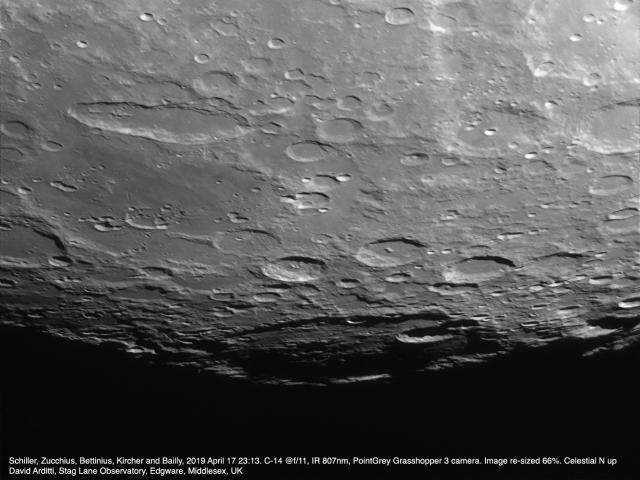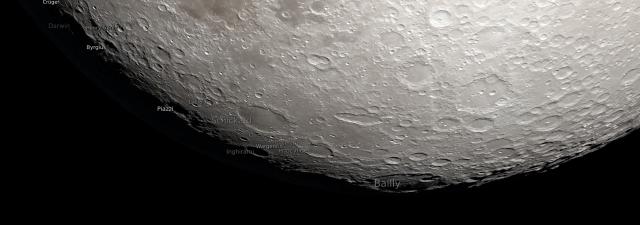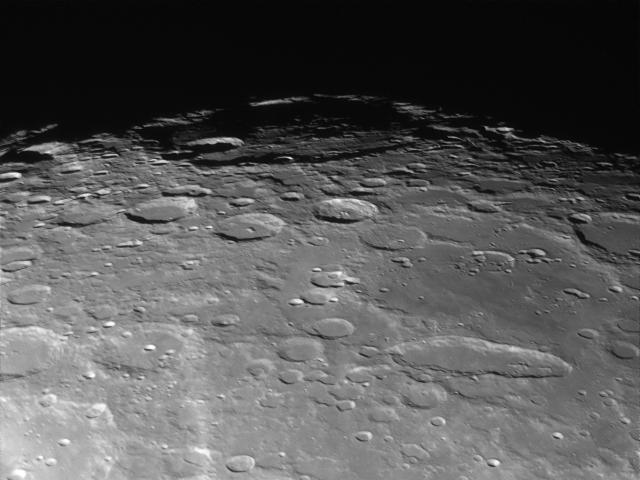- This topic has 2 replies, 2 voices, and was last updated 6 years, 8 months ago by
 David Arditti.
David Arditti.
-
AuthorPosts
-
18 April 2019 at 10:19 pm #574313
 David ArdittiParticipant
David ArdittiParticipantThis view last night really puzzled me: it was extraordinary how Bailly and terrain nearby crated a localised hump, or peak, on the terminator, creating an illusion of Bailly being at the cusp of the gibbous phase, but it wasn’t. Panning the camera live view gradually along the terminator by slewing the telescope, I was surprised to find that I could keep following the terminator way to the lunar south (right in this image), at least two fields beyond this view, till the terminator turned into the limb.
I’ve never seen this phenomenon before, and it is not represented in the Moon simulation app I used to show the terminator at this date and time, Moon Globe HD (iOS). It’s also not shown quite like this in any on-line images I’ve found of this area.
I wonder if this is a known thing: is it an unusual consequence of a particular libration and phase?
It sees to me it can only be explained by this area of the lunar crust around Bailly having a substantial large-scale uplift and deviation from the spherical.
David

Attachments:
20 April 2019 at 12:56 pm #580989 Bill LeatherbarrowParticipant
Bill LeatherbarrowParticipantHi David,
The NASA app Dial-a-Moon, when set for the hour of your observation, replicates what you saw exactly. I attach a crop from what it throws up. If you don’t know the website (which is excellent) you can find it at https://svs.gsfc.nasa.gov/4442.

I think the key to understanding the impression you gained is that the terminator bisects the floor of the crater, leaving the curve of the far wall catching the light beyond the terminator and producing the impression of a raised hump.
Hope this helps
20 April 2019 at 4:29 pm #580990 David ArdittiParticipant
David ArdittiParticipantThanks for that Bill. I hadn’t seen that Dial-a-Moon site before. It is very useful.
Indeed it shows exactly this effect, produced by the far wall of Bailly catching the light while craters to either side just beyond it, Hausen and Le Gentil, are totally dark. The effect was particularly striking with the field of view on the camera being only about 2.5 Bailly diameters wide. It’s more explicable when seen in the wider view. I also viewed it the other way up (I always invert my images to make them celestial N up for publication), and it seems to look, for psychological reasons, more strange when viewed that way: almost like thew apex of a house roof – see below.
The familiar Moon can certainly throw surprises.

-
AuthorPosts
- You must be logged in to reply to this topic.
